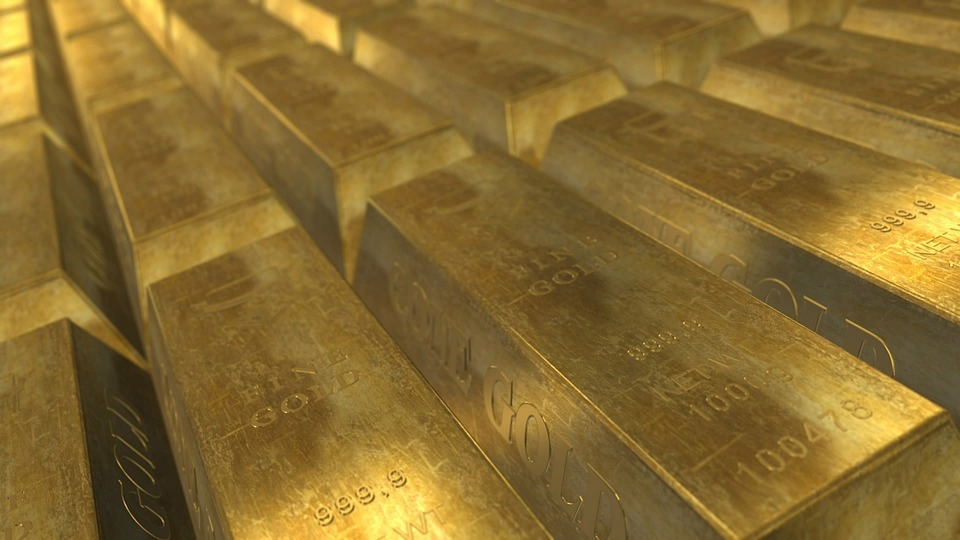Gold And The Art Of Government Spending: A History Of Rising Debt, Falling Faith, And Shining Bars

Image Source: Pixabay
Let’s face it: if there’s one thing governments do well, it’s spend money. And if there’s one thing gold does well, it’s shine when things get messy. As the U.S. Congress teases us with the latest “Big Beautiful Bill,” let’s take a walk through history to see just how often gold prices have winked at us from the sidelines as the deficit ballooned.
Act I: The 1970s – Nixon, Inflation, and the Gold Standard’s Farewell
Our story begins in 1971, when President Nixon broke up with the gold standard. No more dollar gold dates, just a free floating, fickle relationship. Gold, suddenly free to mingle with the markets, found itself in high demand as inflation and oil crises turned the 70s into a party for commodities. By 1980, gold had its first big night out, hitting $850 an ounce as investors fled to the safe embrace of bullion.
Act II: The 1990s – The Clinton Surplus and Gold’s Nap
Fast forward to the 90s, and it’s a different scene. President Clinton, the fiscal tightwad, managed a surplus. The dollar flexed, gold yawned, and prices stayed low. The lesson? When governments keep their wallets zipped, gold takes a nap.
Act III: The 2000s – Bush, the Twin Deficits, and Gold’s Comeback
Enter George W. Bush. Wars and tax cuts sent the deficit soaring. Investors, suddenly nervous about the dollar’s future, rediscovered their love for gold. From 2001 to 2011, gold prices climbed steadily, culminating in a dramatic spike during the 2008 financial crisis. As the Fed slashed rates and the government opened the fiscal floodgates, gold surged from $730 to $1,900 an ounce, proving that when trust in fiat falters, gold gets its groove back.
Act IV: The 2010s – Stimulus, Tax Cuts, and Gold’s Slow Dance
The 2010s brought more stimulus, more tax cuts, and more debt. The Affordable Care Act and the Tax Cuts and Jobs Act each added trillions to the deficit. Analysts debated whether gold would rise or fall. Goldman Sachs, for example, predicted gold would drop after the 2017 tax cuts, but gold had other plans. It climbed nearly 50% over the next few years, as low rates and easy money made gold look ever more attractive.
Act V: 2020 – Pandemic Panic and Gold’s All Time High
The pandemic hit, and governments worldwide unleashed unprecedented stimulus. Gold, ever the opportunist, soared to a new record above $2,000 an ounce. The message was clear: when the world panics, gold parties.
Act VI: 2024 2025 – The “Big Beautiful Bill” and Gold’s Next Act
Now, here we are with the “Big Beautiful Bill”… a sprawling, deficit expanding, multi trillion dollar package. The CBO projects it’ll add $2.8 to $3 trillion to the deficit over the next decade. Markets are nervous. Central banks are selling Treasuries. The dollar is weaker. And gold? Gold is flirting with $3,500 an ounce, with Bank of America and J.P. Morgan whispering sweet nothings about $4,000.
The Moral of the Story
History shows a clear pattern: when governments spend big and deficits rise, gold tends to get a little extra sparkle. It’s not always immediate, and it’s never the only factor. Inflation, interest rates, and global chaos all play their part. But if you’re looking for a hedge against fiscal fireworks, gold has a long, shiny track record.
So as the “Big Beautiful Bill” makes its way through Congress, keep an eye on gold. It might just be the only thing that gets more beautiful as the deficit grows.
More By This Author:
Silver’s Revenge: The Ratio Strikes Back
Golden Gravity: Why 2025 May Be The Year Portfolios Come Back To Earth
Is Gold Warning Us Again? Why Big Money Is Buying Now - Market Reset 2025



